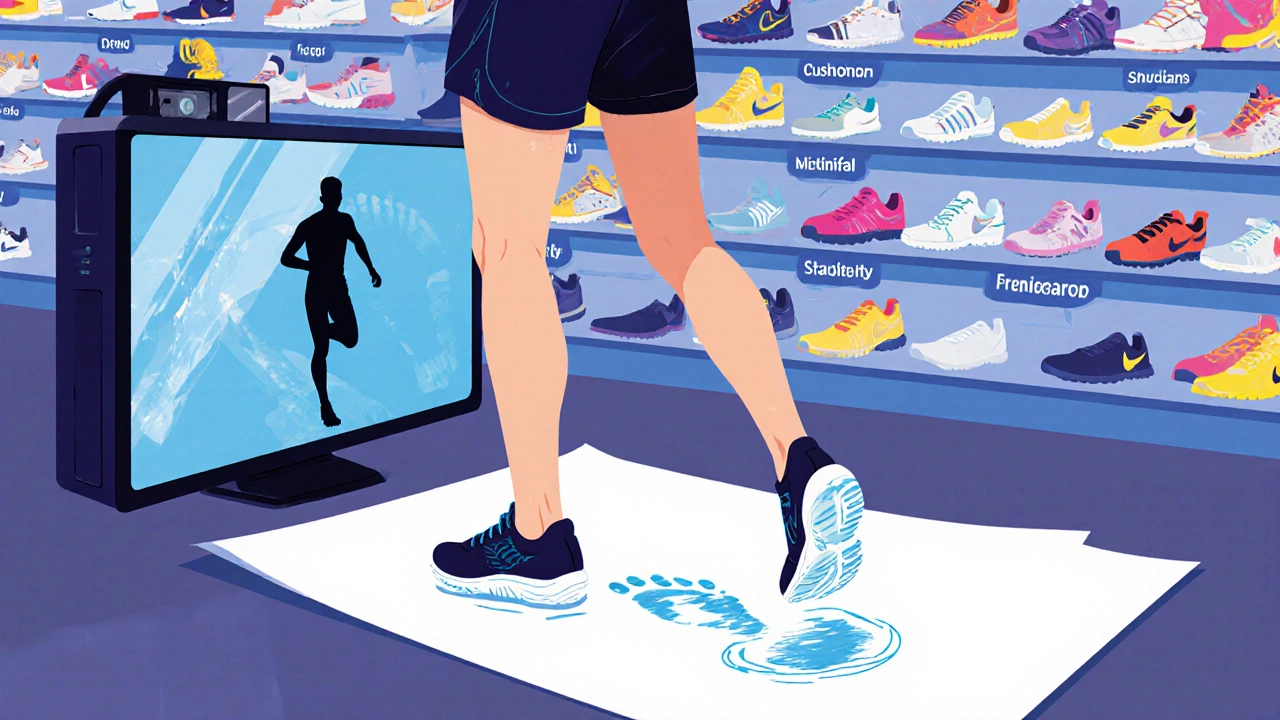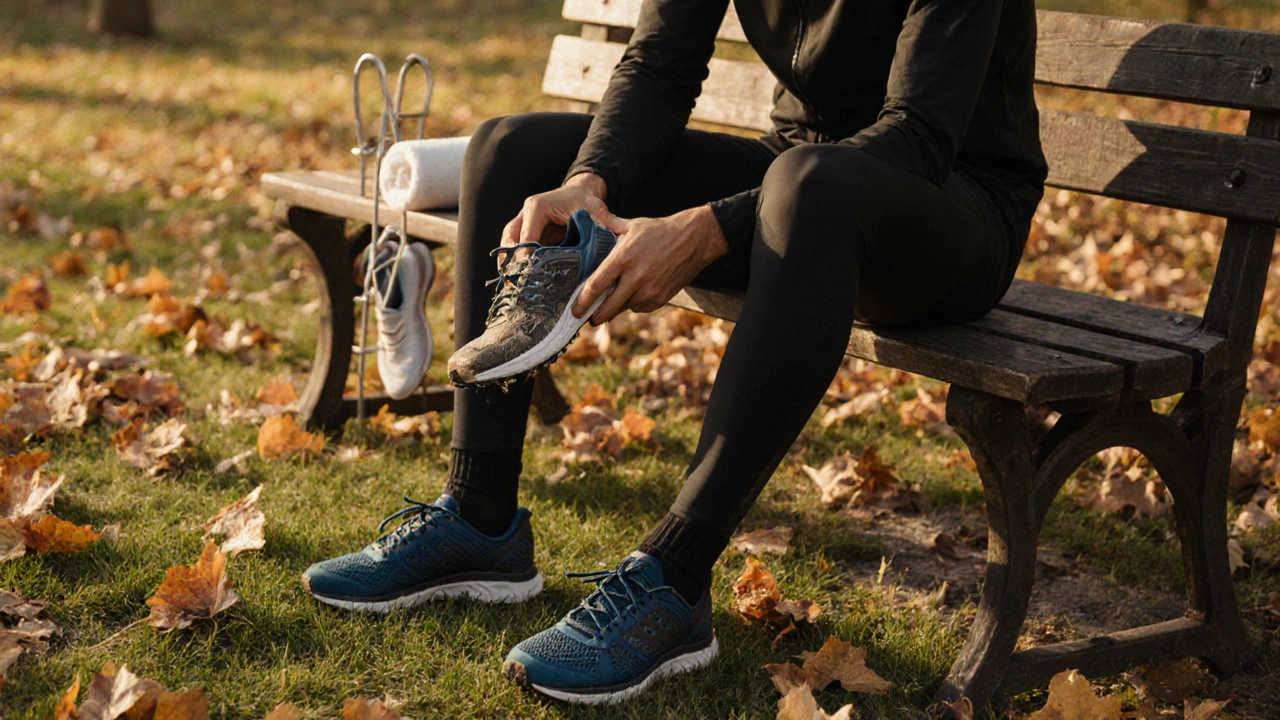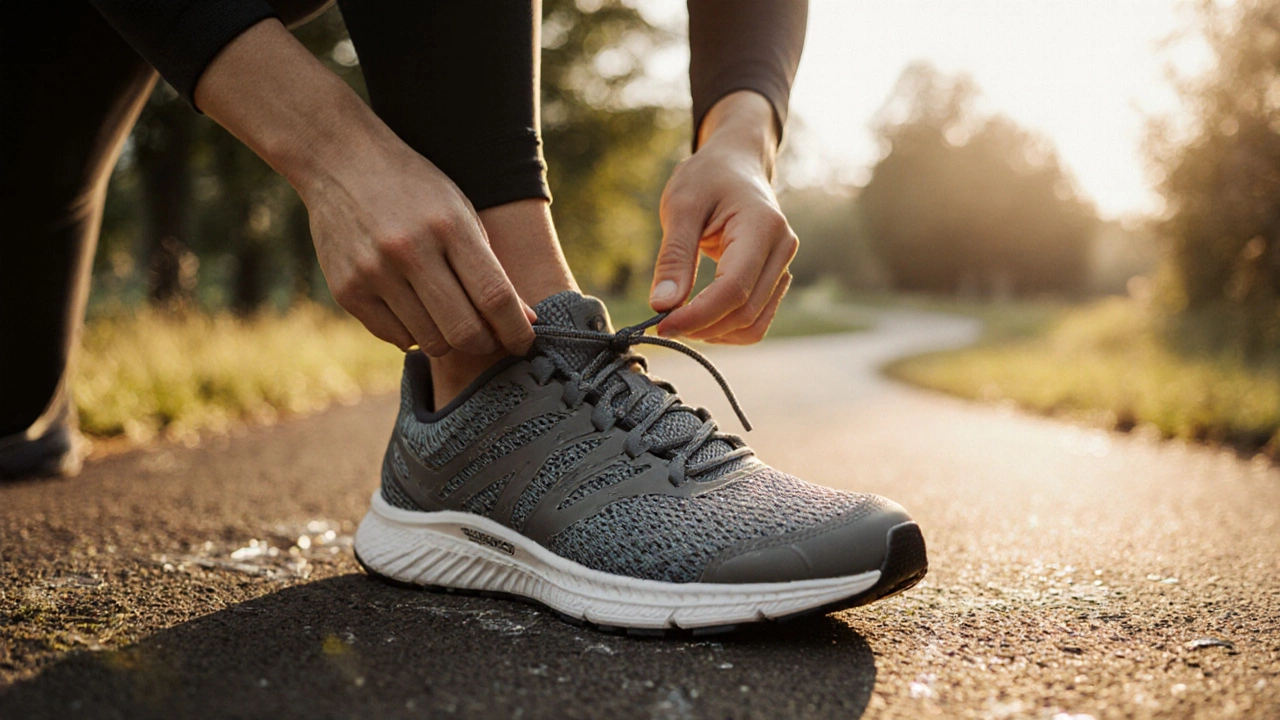Running Shoe Selector for Beginners
This tool helps you find the right running shoe type based on your foot type and running style. Proper shoes reduce injury risk by up to 30% for new runners.
1. How does your foot typically strike the ground?
2. How much does your foot roll inward during a step?
3. Do you have flat feet?
Running shoes are designed to protect your feet, improve comfort, and support the specific way you move while you run. They combine cushioning, stability, and flexibility to match the runner’s foot type and training goals. For beginners, the question is whether spending extra cash on a specialized pair makes a real difference.
Key Takeaways
- Proper shoes reduce injury risk by up to 30% for new runners.
- Match the shoe’s main feature (cushioning, stability, or minimal) to your foot strike and pronation.
- Fit matters more than brand or price - a half‑size too big can cause blisters.
- Replace shoes every 300‑500 km (about 200‑300 miles) to keep the cushioning effective.
- Start with a versatile shoe, then specialize as your mileage and goals evolve.
Why Shoes Actually Matter for New Runners
When you’re just starting out, your body isn’t used to the repetitive impact of jogging. The ankle, knee, and hip joints all absorb shock, and a poorly cushioned shoe can send that force straight to the bone.
Research from the University of Queensland (2023) tracked 500 first‑time runners for six months. Those who wore shoes matched to their foot type reported 28% fewer shin splints and 22% fewer plantar fasciitis cases than those who ran in generic trainers.
So yes, shoes do matter - but it’s not magic. They’re a tool that works best when you understand three basics: foot strike, pronation, and cushioning level.
Three Core Shoe Features You Need to Know
Each feature addresses a different biomechanical need.
- Cushioning: Soft midsoles that absorb impact. Ideal for runners who land heavily on their heels.
- Stability: Added medial (inner) support to control excessive foot rolling (overpronation).
- Minimalism: Low‑stack shoes that encourage a forefoot or midfoot strike and strengthen foot muscles.
Most beginners start with a neutral‑cushioned shoe because it offers a balance of comfort and protection.
How to Identify Your Foot Type
Three quick methods can tell you whether you need extra support.
- **Wet‑foot test** - Wet the sole, step on a piece of paper, and look at the imprint. A full imprint means a neutral foot; a wide shape indicates overpronation.
- **Observe wear patterns** - If the inner edge of an old pair is worn down, you likely overpronate.
- **Gait analysis at a specialty store** - Many shops use video to show how your foot rolls during a short run.
Knowing this helps you pick the right category from the table below.
| Feature | Best for | Typical Cushion (mm) | Price Range (AU$) |
|---|---|---|---|
| Cushioning | Heel‑strikers, long‑distance beginners | 12‑20 | 120‑200 |
| Stability | Overpronators, flat‑footed runners | 10‑18 | 130‑210 |
| Minimal | Runners who want to train foot strength, fore‑foot strikers | 4‑8 | 110‑180 |

Fit Matters More Than Brand
Even the most expensive shoe won’t help if it’s the wrong size. Here’s a quick checklist to nail the fit:
- Leave a thumb‑width gap between your longest toe and the front of the shoe.
- Make sure the heel sits snugly - it should not lift when you walk.
- Try them on at the end of the day when your feet are a bit swollen.
- Run a short 400‑m jog in the store; if any hot spots appear, swap models.
Remember, your foot swells up to 1 cm after a long run, so a half‑size larger than your everyday sneaker is normal for runners.
Common Mistakes Beginners Make With Shoes
Spotting these pitfalls early can save you weeks of soreness.
- Choosing the “lightest” shoe because it feels fast. Light shoes often lack enough cushioning for new joints.
- Copying a friend’s shoe without checking foot type. What works for one runner can cause pain for another.
- Buying on sale without trying them on. Discounted shoes are tempting, but you still need a proper fit.
- Running in the same pair for too long. Mid‑sole compression reduces shock absorption after about 300 km.
Caring for Your Running Shoes
Simple habits extend the life of your shoes and keep the cushioning intact.
- Air‑dry them after each run - never toss them in the dryer.
- Rotate two pairs if you run more than three times a week. This gives each pair time to rebound.
- Avoid wearing them in the rain for prolonged periods; moisture breaks down the midsole foam.
- When the outsole tread is smooth or the midsole feels hard, it’s time to replace them.

When to Upgrade Your Shoes
Even the best shoe won’t prevent injury forever. Keep an eye on these signs:
- Increased soreness after short runs.
- Visible cracks in the upper material.
- Midsole compresses more than 5 mm under thumb pressure.
- You’ve logged over 350 km (≈220 mi) in the pair.
If any of these appear, start hunting for a new pair now - waiting until a major injury occurs costs more in time and bills.
Bottom Line for Beginners
Investing in a pair of shoes that match your foot type, stride, and mileage is a smart move. It won’t turn you into a marathon champion overnight, but it will cut down the odds of common injuries and make those early miles feel a lot more pleasant.
Start with a versatile, neutral‑cushioned shoe, get the fit right, and replace them when the cushioning wears out. As you log more kilometres and discover your preferred running style, you can fine‑tune your selection.
Frequently Asked Questions
Do I need a special shoe for walking vs. running?
Running shoes have more cushioning and a rocker shape that helps with a forward stride. Walking shoes are flatter and lighter. For beginners who plan to run even a few times a week, a good pair of running shoes works fine for both activities.
How much should I spend on my first pair?
A solid entry‑level model between AU$120‑200 offers quality cushioning and durability. Don’t chase ultra‑premium prices until you’ve logged a few hundred kilometres.
Can I use my old gym shoes for jogging?
Occasionally, yes, but gym shoes lack the specific midsole geometry and heel‑to‑toe drop that running shoes provide. Over time they’ll wear unevenly and increase injury risk.
What is the best way to test shoe fit in a store?
Wear the socks you run in, stand upright, and check that you have a thumb’s width at the front. Then jog in place for a minute and feel for any rubbing or slipping.
Should I replace shoes after a fixed number of runs?
Instead of counting runs, track distance. Most experts recommend a new pair every 300‑500 km. If you run three times a week, that’s roughly every 5‑7 months.
